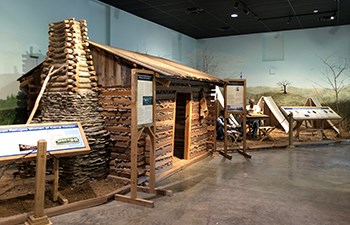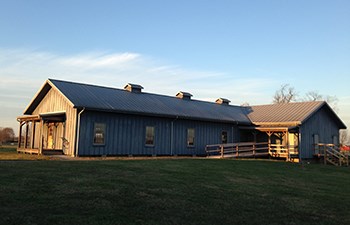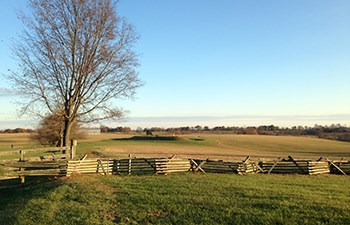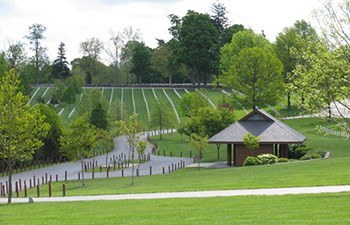
NPS Visitor Center and MuseumThrough museum exhibits and a short film, the visitor center provides an orientation to the historic events that unfolded at Camp Nelson. Objects on display and museum exhibits provide a window into the role Camp Nelson played during its height as a military installation, supply depot, hospital, recruitment center, and refugee camp. 
NPS Oliver Perry HouseThe Oliver Perry House [White House] is an original home built in the mid-1850s and was used as US Army officer quarters while the property was part of Camp Nelson (1863-1866). The home is presently undergoing renovation work and is not open. 
NPS Reconstructed US Army BarracksSitting near the site of the original barracks building, the reconstructed barracks include exhibits describing the military service and experience of United States Colored Troops throughout the war, and the biographies of individual soldiers who enlisted at Camp Nelson. The exhibit is open from 9:30am - 4:30pm (closed between 12:00-1:00pm for lunch) on a seasonal basis, as staffing allows. Visitors can check at the front desk to find out the availability of the barracks exhibit for the day. 
NPS Walking TrailsOver five miles of hiking trails allow visitors to experience first-hand the rolling pastoral landscape of Camp Nelson National Monument. This trail system and numerous interpretive markers provide an opportunity to explore earthworks and fortifications that protected Camp Nelson and allow visitors to walk in the footsteps of soldiers in order to gain an understanding of the sites' significant role during the Civil War. 
NPS Hall CommunityThe community of Ariel (now Hall) grew out of the Home for Colored Refugees after Camp Nelson itself was closed and disassembled. After the Civil War, the community of former USCT soldiers and their families grew to include homes, stores, churches and Arial Academy. While there are no buildings that date to the Home for Colored Refugee-era, there is a small church built in 1912 and named in honor of John Fee who dedicated his life to creating educational opportunities for African Americans. Today there are still descendents of USCT soldiers who call the Hall community home. The Hall site has limited parking and there are no visitor or restroom facilities. 
US Department of Veterans Affairs (VA) Camp Nelson National CemeteryIn June 1866, Camp Nelson U.S. Army Depot was closed, but Camp Nelson National Cemetery, with over 2,400 Federal dead, was created that same year. The cemetery is located adjacent to the national monument and is open daily from dawn to dusk. |
Last updated: July 10, 2023
